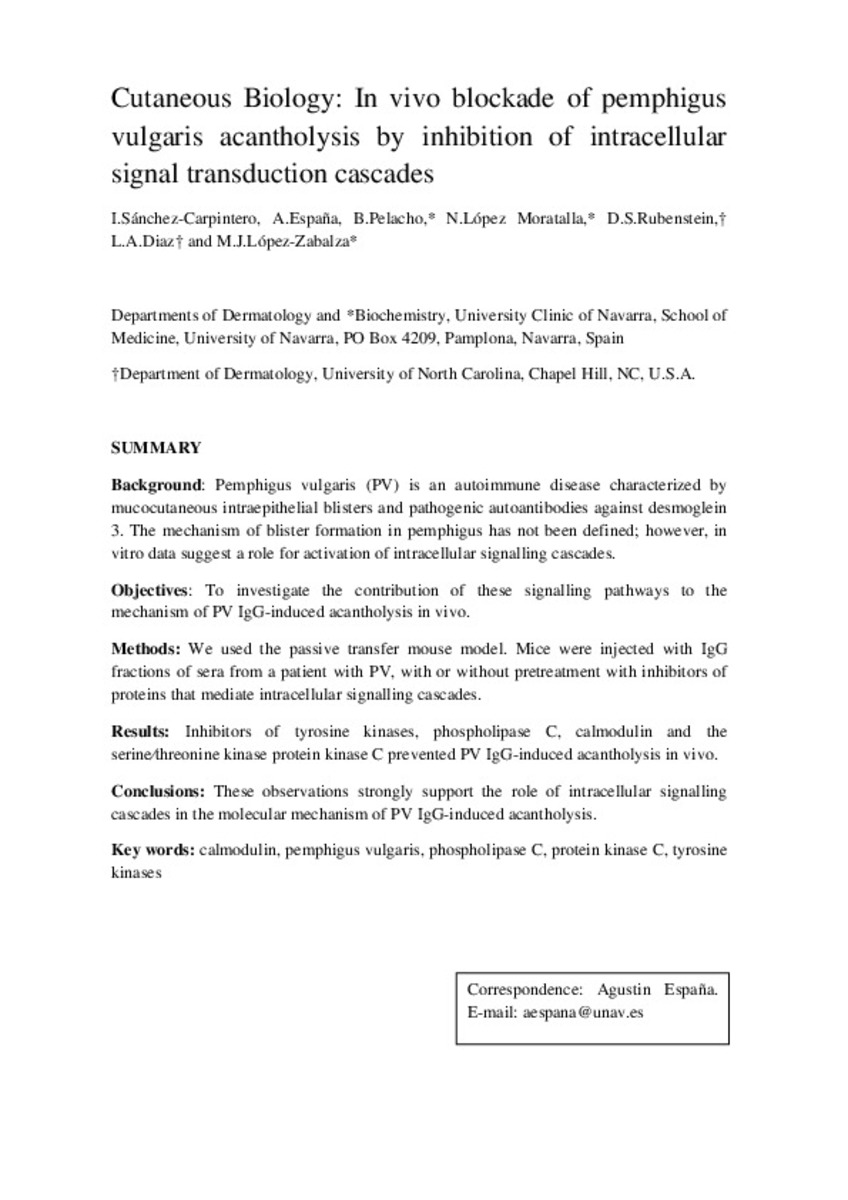Cutaneous Biology: In vivo blockade of pemphigus vulgaris acantholysis by inhibition of intracellular signal transduction cascades
Palabras clave :
Calmodulin/antagonists & inhibitors/physiology
Immunoglobulin G/immunology
Protein Kinases/physiology
Fecha de publicación :
2004
Editorial :
Wiley-Blackwell
Cita:
Sanchez-Carpintero I, Espana A, Pelacho B, Lopez Moratalla N, Rubenstein DS, Diaz LA, et al. In vivo blockade of pemphigus vulgaris acantholysis by inhibition of intracellular signal transduction cascades. Br J Dermatol 2004 Sep;151(3):565-570.
Aparece en las colecciones:
Estadísticas e impacto
0 citas en

0 citas en

Los ítems de Dadun están protegidos por copyright, con todos los derechos reservados, a menos que se indique lo contrario.







